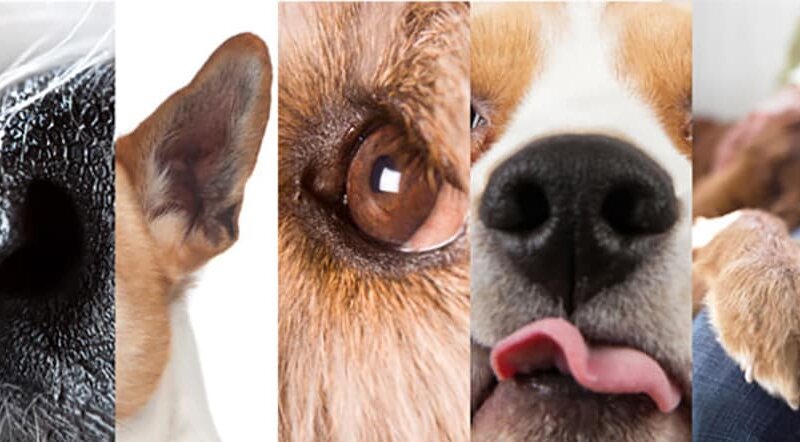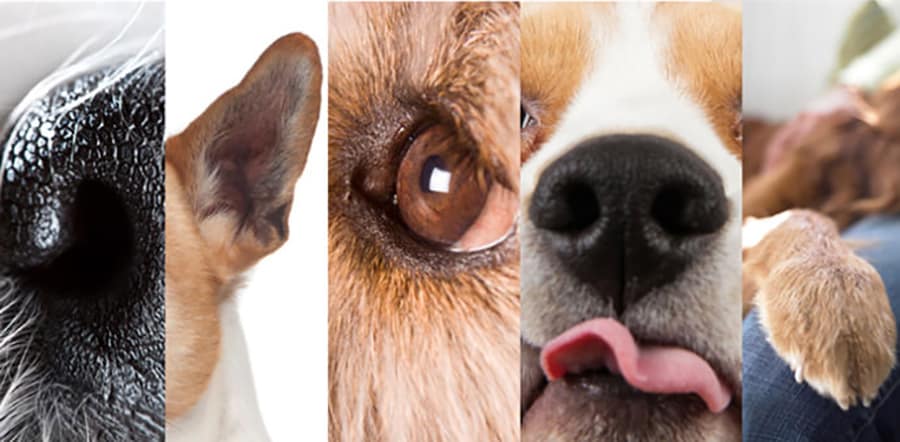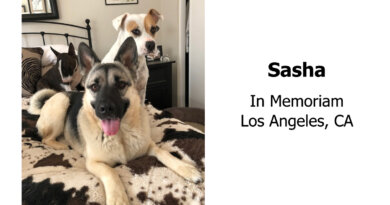Understanding Your Dog’s (Amazing!) Five Senses
In order to understand why dogs do the things they do, you’ll first need to understand how he “sees” the world around him using his five unique senses: smell, hearing, sight, touch, and taste.
Smell
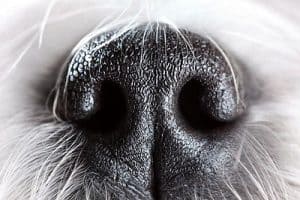
It makes perfect sense, then, that your dog seems fascinated (read: obsessed) with sniffing everything during your daily walks. While it might appear that he’s just sniffing a patch of grass, no different than any other patch, he’s gathering all sorts of information about who or what was there before. Luckily, as pet parents, we can use our dog’s incredible olfactories to assist in training, in fun scent games, and to build their confidence! Dogs absolutely love games that let them use their noses. And, because they’re so naturally good at them, it’s a confidence booster when they succeed.
Stimulate your dog’s sense of smell with treat puzzles, by hiding treats or toys around the house or yard and letting him find them, or by enrolling him in the sport of canine nose work.
Hearing
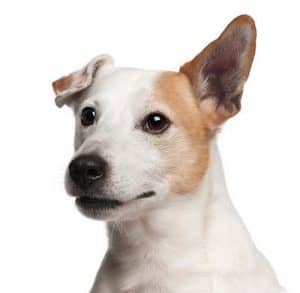
Their incredible sense of hearing is, in large part, due to the unique shape and structure of their ears, which rotate and move independently of one another. That’s why caring for your dog’s ears is so important. Your dog’s ears should be inspected regularly for redness or irritation, dirt or debris, waxy buildup, or any other abnormalities. They should always be kept clean and dry, especially dogs with floppy or long, droopy ears that are prone to infection.
Sight
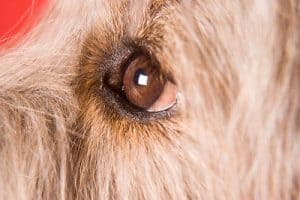
Have you ever noticed that your dog will easily lose a tossed ball in the grass, even if it appears that they’re looking right at it? To make it easier for your dog to see his toys, choose those with highly contrasting colors or a toy that glows, lights up, or moves. Or, find a toy that takes your dog’s more developed senses into consideration, like scented dog toy that he’ll be able to smell, or a toy that makes noise.
Touch
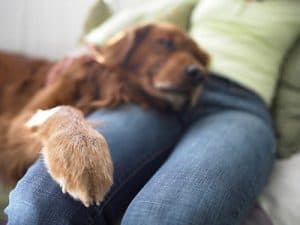
Dogs continually use their sense of touch to communicate with other dogs and with you. Physical affection, petting, scratching, and massage are all positive and important ways to communicate to your dog through touch. Another great way to show affection through touch that your dog will absolutely love (and he’ll benefit from, too) is brushing! Using a massaging dog brush, gently stroke your dog’s body, activating those nerve-endings, loosening hair, and giving his coat a great shine.
Taste

Because dogs don’t eat food for the taste, and will often chew and swallow anything that remotely resembles something edible, it’s important to carefully monitor your dog and watch what he puts into his mouth. Many of the foods your dog will gladly scarf down can be deadly if swallowed. Many popular plants are toxic, even if only licked (See this guide to 199 Potentially Deadly Poisonous Plants).

